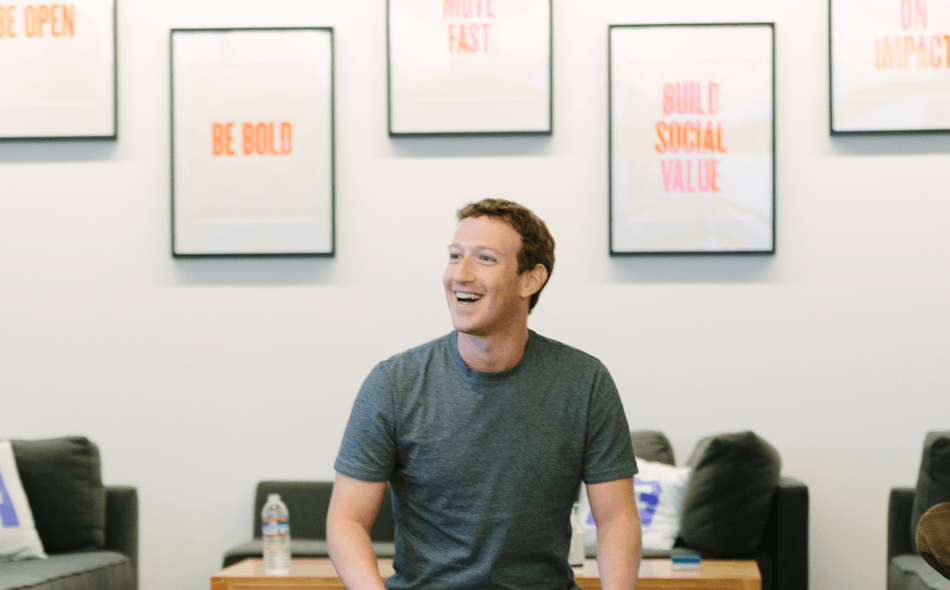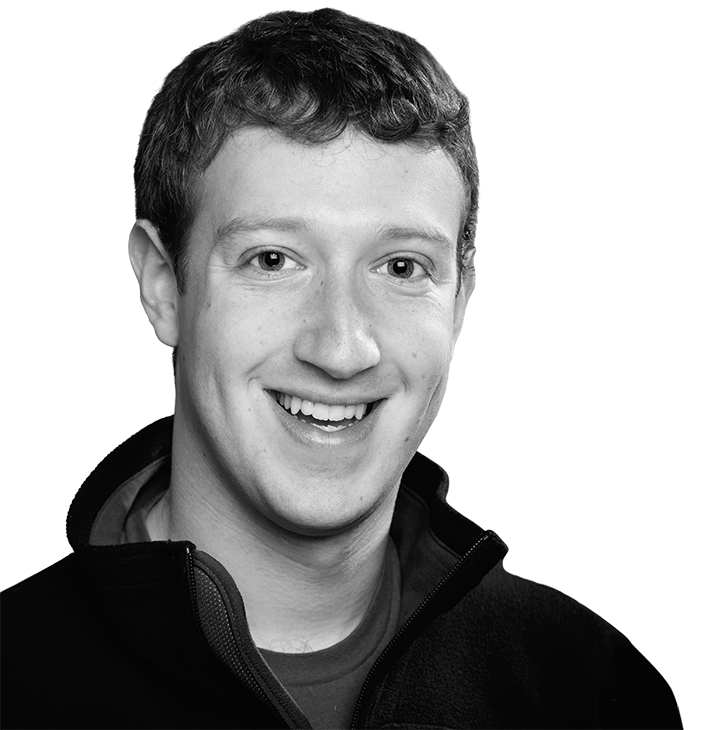
Source: Dom Galeon and Patrick Caughill, Futurism (September 22, 2016)
Zuckerberg, Disease, and Technology
By Parsa Sanjana Sajid



On stage, any stage or state, if he can get away with it as he often does, Mark Zuckerberg fashions his sartorial color palette after overcast weather, grays and gloomy blues. He has been on record saying his sartorial choices are such that he has one less thing to worry about while devoting time to big boy duties of solving bigger, knottier problems, a tendency not unseen among his gelatinous Silicon Valley cohorts. And this streak of problem solving to which style must be sacrificed extends beyond their immediate business domains to anything, really, because this is what Valley mavens think they do, solve problems.
And so the Chan Zuckerberg Initiative (CZI) arrived on scene in 2016 in that lineage of problems and solutions. To announce the initiative, Zuckerberg presented in his signature look of gray tee, jeans, and sneakers. In the background: a suitably bland PowerPoint presentation outlined “The Plan” for CZI with bullet points to match that overcast weather aesthetic. You get the feeling this gray tone on stage – minimalist the way Zuckerberg outfits are minimalist, that is to say, cheerless – was specifically curated to align with his preferred uniform.[1] Perhaps also uninspiring by design is the message itself. From the event photo, in front, on stage right is Zuckerberg in presentation mode, hands clasped near his chest. You have caught him mid-talk. In this framing, The Plan overpowers. And what is that plan? It is to: “Bring scientists and engineers together;” “Build tools and technology;” “Grow the movement to fund science.” Words, grand yet vacuous, substance free but loaded; these are not ciphers but project a similar vibe to Zuckerberg’s manufactured simplicity. As with Zuckerberg’s (non)style, their simplicity is misleading. Through their meaninglessness, they still transmit a reigning myth about technology, which Joel Dinerstein (2006) correctly identifies as a kind of religiosity.[2]
Any myth requires its purveyors to believe in their potency and Zuckerberg is no exception: CZI’s wants to cure all disease. And how would they achieve it? Their mission would be to understand “underlying mechanisms of disease and [develop] new technologies which will lead to actionable diagnostics and effective therapies.”[3] Press materials citing Bill Gates called this plan “very bold,” that is, CZI’s mission to make the world “disease free” within a generation. There, again, that immodest faith in technology and science. The nothingness of this statement imparted with such words as, "underlying mechanism", "diseases", "new technologies", "actionable diagnostics", and "effective therapies", reek heavy with presumptions of the infallibility of science and technology. Each weighted with ameliorative power for those who believe: they exist as always-already tenets having successfully elided the historicity of science and technology while obscuring the dire implications of such grandstanding. As Dinerstein argues, “technological utopianism...functions as a form of social evasion” through which what is already extant as social good but deserves to be dismantled instead – linear and rational progress, masculinity, productivity, whiteness – gets reestablished under a beguiling, neutralized techno mask of objectivity. He goes further to add that “technological progress has long structured Euro-American identity”, instrumental to a “muted form of social Darwinism” and “is the telos of American culture, the herald of the future, the mythic proof in the nation’s self-righteous pudding.” Eliminating all disease, even as an aspiration, is a snug fit within that teleology – bold, indeed; arrogant, seen from a different angle. But none of these, ardent technology worship and an equal fervor for disease extermination, are novel, harkening to at least a couple of centuries but new in a way every capitalist iteration of an old thing is new, repackaged and remodeled, an update if you will.
Visual cues are an important cog in that iterative wheel. When there is a readymade foundation of knowledge and knowingness, a few bullet points are enough, familiar; in this case, technology is supreme and will be harnessed for good to eliminate diseases. For the IRL audience at Zuckerberg’s CZI presentation, the messaging is easily understood, but images from the event have even more staying power as they circulate and are reproduced as mantras. In the photo, from the angle it is shot, the texts are in the background but they are center stage to Zuckerberg’s peripheral position as he stands dwarfed by the imposing screen, gray melting into gray, almost insignificant. The framing directs the viewers’ eyes to the center and although he is the principal on stage, the one speaking, messenger and messiah of tech utopia, this near-effacing image creates an illusion of a message speaking for itself, neutral and objective, standing as self-evident truth. Without overemphasizing visual miscellany because that ignores why and how images gain currency in the first place, images as they recirculate can seed and entrench their message when they are already attached to those commanding materials conditions of power; regurgitated through digital platforms these messages enter our lexicon as vernacular.

Source: Facebook (February 1, 2017)
Within the Zuckerberg universe there is precedence of Silicon Valley sound bytes churned into conventional wisdom. A different photo from a different setting but in a similar gray tee has him foregrounding a wall of texts as inspirational as you can expect from communications experts. One of the frames in the background announces, “Be Bold.” Another reads, “Build Social Value.”[4] And there is of course the more well known in this genre: Zuckerberg standing next to the company’s since modified (under duress) mission, “Move Fast and Break Things.” These exhortations are at once manufactured gibberish work shopped through the PR mill and how Facebook projects itself to the world; there is an audience in mind here who would be educated through these aphorisms. Such substance-less inspirational quotes are not unique to Facebook or even Silicon Valley when branding taglines and PR messaging are how institutions define themselves; there is Google’s now iconic gone sour “Don’t Be Evil” or to pick a random example from another industry, the USA Network’s “We the Bold.” Mere platitudes as they are, there is also an eidetic appeal at work if simply (though unfortunately) because they are reinforced constantly via dictums of capital. Being bold is where it’s at, whether one is just following the status quo (not bold) or being ravenous (destructive, bold) given capitalism’s enormous capacity to absorb everything in its wake. While Facebook has had to moderate its image recently (if not really in substance, but again, in messaging) and Zuckerberg forced into public penance, a sweeping intent to cure all diseases carries that same genetic imprint.
Right along this old-new-old cycle of transformation, the consulting outfit PwC published a report in 2017 proselytizing the advent of robotics in healthcare titled “What doctor? Why AI and robotics will define New Health.” Medical research, the document claims, “is not just about finding new drugs to combat disease” whose ultimate goal is to “inoculate against or completely eliminate disease.”[5] A helpful reference to CZI is included. So is an example of a EU-funded company Robot-Era: “Developing robots that move around on wheels but have a friendly humanoid face. The robot’s sensors and cameras are used to gather and analyze real time data which is then sent to the cloud wirelessly where algorithms extrapolate such advanced information as whether someone is showing signs of dementia.”[6] For PwC this confluence of tech evangelism and disease eradication precedes CZI’s foray into the field – they have produced an extensive, if sorry, repository of literature on “owning diseases” for more than a decade.[7] Writing about nanotechnology in 2006, Dinerstein illustrated medicine as a “primary locus of its application” with researchers developing nanobots to “cure the body without surgery or chemotherapy.”[8] Nanomedicine researchers had already set their gaze upon eliminating all common diseases, but as Dinerstein also shows this is to expand human capacity especially our mental abilities, a rather suspect venture sculpted in ableist terms because disease elimination is routed through a “dream of bodies of pure potentiality.”[9]
But disease is historied. Only very recently the World Health Organization (WHO) removed being transgender – in WHO terminology “gender incongruence” – as a mental disorder but the announcement will take effect in 2022 after presented to its legislative body in 2019.[10] A medico-legal self structures our understanding of diseases, the corollary of which is to eliminate diseases but also to produce new forms of illnesses to erase, in a never-ending race to rid the mind and body of afflictions.
One of the more prominent examples of disease in Western tradition is of those suffering from leprosy, emblematic of suffering, encumbered with stigma and in need of absolution, deliverance from which comes from divine intercession. Rembrandt’s pen and ink depiction Christ Healing a Leper[11] is a supplicant at the throes of purification from a touch of Christ. The underlying schema is one of disease as punishment for sacrilege. We can once again turn to Rembrandt for a visualization of this in King Uzziah Stricken with Leprosy. His sin? “For burning incense in the temple of Jerusalem, a privilege for priests only.”[12] In it, with a face the texture of mottled, popcorn wall, he looks on in solemn resignation as if to seek communion with viewers, all of us sinners.
The abjection of a diseased self in need of spiritual cleansing share the same genealogy with reconfiguration of social spaces to be cleansed of pollution, and disease. The rise of public health, particularly sanitation, is “suffused with moral and racialist overtones”[13] employed against colonial subjects and chattel labor across Euro-American territories and as James Duncan illustrates with British colonial Sri Lanka:
“The idea of ‘dirt’ became increasingly prominent in colonial discourse during the nineteenth century, as the British marked their own hygienic practices off from what they saw as the dirt and disorder of colonial environments. Dirt was not just pollution in the environment, it was thought to emanate from unhygienic or immoral bodies[14] and pollute the surrounding environment.”[15]
Colonial administrators and public health officials made it routine to sequester raced others “to minimize health threats posed to whites by the inferior races and their poor sanitary habits.”[16] The plague pandemic of 1894 saw residents of Hong Kong and Bombay forcibly removed to segregation camps, setting off a wave of similar activities from California to West Africa.[17] This both preceded and succeeded myriad other ways colonized and enslaved communities were riven apart to uphold, against their will, a white imaginary, a white body politic; and public health was molded through a kind of hygienic citizenship to secure that space and body. The maintenance of this body politic then hinged on locating disease, still tied to weakness of the soul, in racial inferiors. Returning to leprosy,
“In the nineteenth and twentieth centuries, leprosy was not exclusively a colonial issue, but for most English-speaking governments, scientists, epidemiologists and public health officers, leprosy was thoroughly organized through, situated in, and productive of questions and imperatives of race relations and colonial rule.”[18]
Conveniently constructed as a tropical disease, despite evidence to the contrary, the overwhelming non-whiteness of leprosy sufferers served as yet another excuse for spatial governance to isolate the diseased into quarantines to continue racial hygiene under a public health banner. At its core, the policy was to force lepers into segregation, but this was also when arraying belonging by citizenship and modern spatial governance flourished. This is why “leprosy management” was not limited only to quarantines but included “spatial policing of racially identified individuals and groups in the social domain.”[19] In many places, colonial officials encouraged self-management and “voluntary” participation where “consent was sought, or at best was manufactured” to induce segregation as part of “productive training of lepers into civic subjectivity.” Citing leper colonies in Culion, Palawan, Bashford indicates that they became laboratories of modern citizenship, the bureaucratic management of separation born from sustaining white racial dominance.
In a commingling of race, disease, and sin, the title of Rembrandt’s King Uzziah was variously identified as a portrait of an oriental or a rabbi and at the time of its initial purchase in mid seventeenth century, was known as The Portrait of a Pasha, a decidedly oriental figure.
The association of leprosy with moral decay and stigma however predates modernity. In Japan, for example, records dating back to the eight-century link the illness with religious transgression. There is evidence from as early as eleventh century Japan of patients forming leper villages due to social ostracism and while in medieval culture “the sufferer of leprosy was an ambivalent figure,” there were often as many examples of patients integrated into a community.[20] But during the Meiji Restoration of late nineteenth through early twentieth century when the West became a model for social and political reforms, leprosy was reconceived as a national shame and with that there were renewed measures to address the illness within that framework.[21] Dovetailing as they did with Christian missionary activities and media attention following a West-as-enlightenment and source-of-progress template, a national conversation on the disease ensued, and the Japanese government enacted a series of leprosy management laws beginning in 1907. For a modernizing Japan, that was to adopt (and adapt) a Euro-centric spirit. With leprosy specifically, policies emphasized quarantine and separation and the Meiji government targeted sufferers having internalized the illness’s association with “non-European, specifically colonial populations” effectuating a recombinant terrain of exclusion where patients could seek voluntary treatment but something mostly well-off families could afford, “while poorer sufferers could be forcibly quarantined.”[22]
This fusion of disease and race with disgrace, weakness and sin to validate cleansing rituals of selves and spaces buttressed its noxious foil – the illusion of white strength and purity. In conjunction with Enlightenment or more accurately because of, the entanglement of race and biology produced a transformation of understanding— Foucauldian biopower, and biodeterminism became an instrument for population control. “The incorporation of race into biological science, eugenic policy, and technology beginning in the mid-nineteenth century” gave rise to race as “characteristic physiological processes and functions, including sexuality, cognitive development, and vulnerability to degenerative disease.”[23] In this context, whiteness is/was the standard of civilization for others to follow or fall in line, though paradoxically if not unsurprisingly, a whiteness also in continuous need of improvement to assert its strength and beauty. It was through fervent use of technology that eugenics flourished as the touchstone of medical science in that era to arrogate a divine and superior whiteness from a diseased, weak, sinful brown and blackness. And the project of elimination of diseases and deployment of technology to do so were coterminous with creation of super citizens and impeccable civic spaces for an enjoined whiteness and an attendant social order, capitalism. Not only that – managing diseases conjoined with managing superiority seeded a twinned social and self-surveillance apparatus, projects that its champions saw as ambitious yet inevitable.
And this is where Zuckerberg’s messianic ambitions converge with their precursor. The desire to own or eliminate all diseases channels a specific lineage, that is, the vision of an ideal man.[25] Borrowing from Sylvia Wynter this “globally hegemonic ethnoclass world of ‘Man’” encoded with white Enlightenment ideals over-represents and dominates the interests and well-being of the empirical human world.[26] It is a man steeped in economic and social relations of capitalism and race, which generates a bio-medical-legal self as a site of continual improvement, for producing value, social or otherwise and reconfigures their surroundings in accordance. When Zuckerberg refers to disease elimination, the yield is that over-represented man at peak capacity and productivity, who can also lay claim to entitlements (i.e., rights); disease on the other hand is a spiritual and moral failure, a sub-optimal condition.[27] A self forged in this fire must continually aspire to improvements by submitting to social and self-surveillance. As Kate Crawford et al document, the technologies of self-tracking and social monitoring built into such technologies, from early twentieth century weight scales in public places to current wearable techs such as FitBit, summon a kind of morality of self-knowledge on the path to betterment, achievement of which is reliant on self-monitoring blended with social discipline and necessary to lead a good life – you learn the metrics against which to chart progress and share them to form a public disciplinary feedback loop.[28] Facebook is firmly implanted in that lineage: beyond its algorithm of user surveillance, the platform itself is designed to be an ecosystem of user self-tracking and social monitoring. With boundaries between voluntary and compelled no longer useful, users share information to connect with others. The company deems these sacrifices necessary, curative, as they promise emotional wellbeing by connecting you to the world, isn’t it nice to talk to your grandmother or friend in another country. Your likes and activities are spat back at you to tell you what you like and desire, and should like and desire. It is profit and surveillance as jouissance, a good for your own good via constant submission.
Deploying technology as a curative element is not accidental. Dinerstein again: “Technology as an abstract concept functions as white mythology.”[29] As a secularized version of spiritual affirmation, akin to Christ healing a leper, technology now performs religious cleansing rituals of yore. It alters how we care for our and others’ health into efficient resources for exploitation.[30] Its whiteness derives from a “synthesis of Western rationalism, Christian disdain for the animal body, and superiority over the Other” to constitute “a faith-based narrative whereby scientists eliminate all subjective experience to focus on the dream of” a mechanized self, in pure form, a mechanical brain “from which they can upgrade the human race.”[31]
But the game is rigged when disease is both a cause and effect. Disease is never solely biologically determined when biology itself, including disease prevalence, is as much environmental. Yet the conflation of disease with sin and inferiority is instrumental in separating the strong (marked as white) from the weak (marked as non-white). The strong constantly locates and produces disease and sin in the so-called weak to assert its moral hegemony. To clarify, consider three disparate yet linked instances: Obesity; the wellness industry; and health insurance and access. When political, economic, and material conditions are responsible for obesity, it is impossible to ignore them and most literature now emphasizes social determinants of obesity. Still, the persistence of seeing obesity as an epidemic and a disease, being fat a moral failure, reveals how raced and classed, and thus segregationist, notions of health are. With wellness, its transformation into an industry replicates burdens marked-as-unwell/weak people face to self-actualize into their optimal selves with women constituting a large portion of the market. On the other hand, despite these implicit and explicit demands for remaking oneself, unless already entitled, avenues for improvement and wellness are foreclosed since health insurance and access are not rights. That healthcare is tied to employment, to productive capacity – another marker for superiority – illuminates who is deserving of rights, who isn’t, who is entrusted with and can claim health, who are denied of it. Consider then how this (ill)logic works: an abiding faith in maximizing potential means illness is for the damned or an elaborate scheme to define the damned inevitably blurs it with illness; redemption is available, but through potential maximization, that is, maximization of health, and yet very few can achieve it unless already entitled and privileged because of systematic obstruction of health through limited access to healthcare.
Zuckerberg’s bid to rid all diseases does not fix but merely extends this (ill)logic. Like others in its strain, it is daring in its desire to escalate extractive social relations, though it lacks imagination to make those relations reparative. But technology has not yet acquired an independent subjectivity. It reproduces the presumptions and truisms from the society in which it emerges[32] while leaving other possibilities alive.
Question is, how might we then live with sin, among and with sinners?
----------
References
